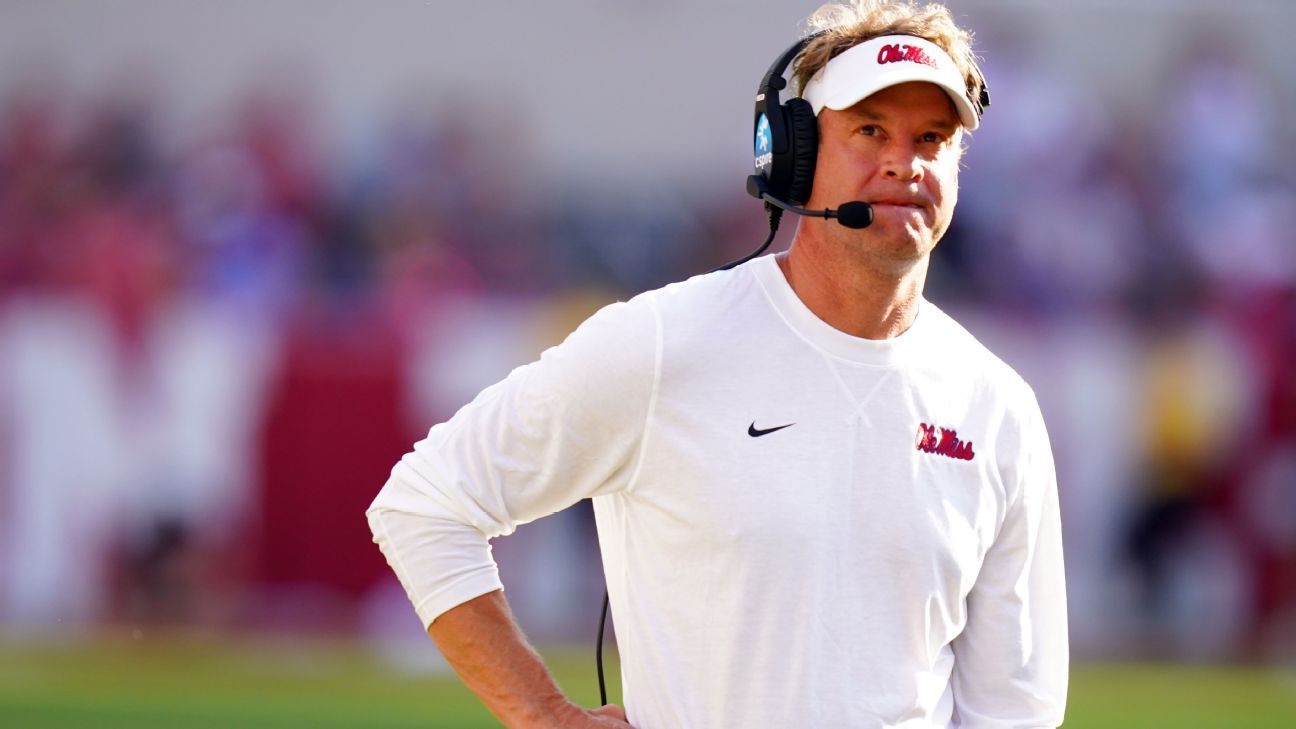One of the most anticipated fights — and the one most often asked about — continues to be Conor McGregor’s next match.
McGregor has been adamant that he will return from his broken left leg in 2022. But as the months go by, that seems up in the air. And then there’s the question of whom he would fight to begin his comeback tour. Could it be a rival like Nate Diaz? What about Michael Chandler, who entered his name into the sweepstakes after knocking out Tony Ferguson at UFC 274?
Questions about McGregor’s next bout have flowed in, but it was not the only thing I’ve been asked about. This week’s column also looks at weight misses and weight-cutting in MMA and a look back in history to opine on whether fighters of the 1990s like Ken Shamrock or Tito Ortiz could compete in today’s era.
Throughout the year, I’ll continue answering your questions about the latest, most interesting topics in MMA. Have a good one? Send me a tweet at @marcraimondi, tweet your questions using the hashtag #LegitimateQuestions or email them to espnmmamailbag@gmail.com.
Current thoughts on Conor McGregor and who he should fight next? — @dean_21/Instagram
That’s a complicated question.
His once-ingenious social media game has now become cloying. Remember his tweet when he “retired” for the first time in 2016? “Thanks for the cheese.” Or the borderline poetic Facebook statement that followed that? Brilliant stuff. But that slickness, that finesse has been lost to time. Certainly, McGregor’s brushes with the law have been a red flag. In recent years, it seems like chaos surrounds McGregor, despite his financial success with Proper No. Twelve Irish Whiskey and other ventures.
Yet I can’t help but find myself looking forward to McGregor’s return to the Octagon. Yes, McGregor has exactly one win since 2016. It’s a true and alarming stat. But I don’t feel that the McGregor book is finished in regard to MMA. There are several comeback chapters there to be written.
McGregor has been on the shelf since July 2021 with a broken leg he suffered in a fight against Dustin Poirier. The timetable for his return remains unclear, though he’s still pushing to get back into the Octagon before the close of 2022. With the UFC filling out its schedule just about through September, it seems November in New York or December in Las Vegas would make the most sense. Or sometime early in 2023.
Let’s be honest here. The world of MMA is much more interesting with McGregor in it. The former UFC double champion remains the biggest star in the history of the mixed martial arts business. When he fights, the entire world comes to check out the sport we all love. He sheds a celebrity light on MMA in a way that no other has ever been able to with regularity. An active and present McGregor is good for the UFC — and I’d argue it’s good for McGregor, too. Remember that run he had in 2015 and 2016? The “Notorious” Irishman fought five times in 16 months, going 4-1. That stretch was capped by one of the greatest MMA fights in the Nate Diaz rematch and one of the greatest title performances of all time against Eddie Alvarez. McGregor has said that the long layoffs — just three fights since 2018 — have hurt his game.
As far as who should be his first opponent back, the UFC has wanted to put together the trilogy bout with Nate Diaz, and at one point that seemed to be the plan for this year. But if you read the tea leaves — aka the proposed fight cards above UFC president Dana White during interviews at UFC headquarters — it seems like the promotion is moving away from that, with Diaz potentially linked with Khamzat Chimaev. McGregor vs. Diaz 3 could still happen, but I’d imagine it would depend on when McGregor is ready. Diaz has been asking for a fight for months now.
I’ve been saying that I love potential McGregor matchups with Tony Ferguson and Michael Chandler. McGregor has indicated that he’d prefer to fight at welterweight, though. A move up wouldn’t hurt Ferguson, who is coming off that front-kick knockout to Chandler at UFC 274, and that bout would have a lot of emotion going into it. McGregor and Ferguson have gone at each other on social media, and Ferguson was once part of Paradigm Sports Management, which also reps McGregor.
I’ll throw out two more names for a McGregor comeback fight: Jorge Masvidal and Dustin Poirier. The former is obvious — he and McGregor are two of the three most prominent stars in the UFC. Poirier doesn’t have anything to prove after beating McGregor twice in 2021, but the second bout did end in McGregor’s leg injury. McGregor would surely like another crack at Poirier, who is now out of obvious lightweight title contention after losing to Charles Oliveira and is open to fighting at welterweight.
Do you think more should be done to punish fighters who miss weight. It’s gives the fighter an unfair advantage the same way that ped’s could do but isn’t punished as such #ESPNMMAmailbag
— Charles Lee Ray (@StuttgartJambo) May 26, 2022
The short answer is no, but let me expound. Do I think missing weight in MMA is a problem? It is. But I think a bigger problem is the actual practice of weight cutting. I’d prefer commissions and promoters to develop a way to incentivize not cutting an excessive amount of weight rather than coming down harder on athletes who miss weight. In my opinion, harsher penalties for those who miss weight will only lead to fighters getting themselves sicker trying to make the mark. Generally speaking, fighters already do everything to cut the weight to hit that contracted number, sometimes to the detriment of their health.
The unfair advantage hasn’t necessarily been proved. State commissions have done studies on this, and there is no statistical correlation between coming in heavy and winning fights. There is also no statistical correlation between cutting considerable weight and winning. In many cases, two fighters walk around at a similar weight, both cut about 20 pounds and then put on most of that back the next day to fight each other. The whole thing seems silly. Do you think Steph Curry cuts 20 pounds the day before he competes in the NBA Finals? There’s no way scientifically to have peak athletic performance one day after an extreme weight cut.
MMA is a weight class sport, and weight-cutting will always happen. There has to be a better way, with athletes competing closer to their natural, walk-around weights rather than depleting themselves to a dangerous level 36 hours before getting into a cage fight. If the weight cut causes more damage to a fighter than the actual fight, then the system needs to be addressed.
Which fighters from the 1990s would have the best chance of competing in today’s MMA? — @vincenttorrez/Instagram
Not many, frankly. MMA looks completely different from when it first began in earnest in the 1990s. Back then, everyone was a specialist, mastering one particular martial art and not much else.
Royce Gracie dominated with Brazilian jiu-jitsu. Ken Shamrock was a submission grappler. Dan Severn and Mark Coleman could wrestle their butts off. Maurice Smith opened the door for kickboxing to have its moment. The elite fighters of today have very few holes in their games. They might be excellent at one specific thing, but they’re competent enough in every aspect to be well-rounded. Look at someone like Kamaru Usman, a phenomenal wrestler who has evolved into a champion who can stand with and knock out sluggers like Jorge Masvidal and Gilbert Burns.
The fighters from the ’90s who would do the best today are bigger guys like Randy Couture, Vitor Belfort, Andrei Arlovski, Josh Barnett, Frank Shamrock and Tito Ortiz, most of whom took off in the 2000s. Some of them are still competing today. Couture’s wall-and-stall techniques have never gone out of style, and Ortiz’s wrestling and ground-and-pound was fearsome.












